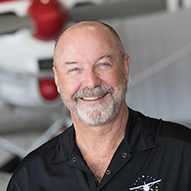Sponsored by Aircraft Spruce
Training and Safety Tip: Making the best of the worst
Somewhere in our flight training there is a lesson planned that many student pilots find intimidating: emergency procedures—specifically, an engine failure in flight.
This worst-case-scenario actually isn’t all that difficult to deal with. Yes, your heart rate may go up a bit. Your breathing may become quicker, and your palms may sweat. That is all normal You're feeling stressed.
- Pick a spot and prepare to land. It is really that simple. When the engine quits on a single-engine airplane, gravity is our energy source. Trim the airplane to maintain a stable airspeed and have full control of the airplane. Turn toward the best-looking landing option you have. Remember to look below and behind you for alternatives.
- Now that you’re trimmed and headed in the right direction, try to restart the engine. If you were cruising a few thousand feet above the ground, you have plenty of time to troubleshoot. Switch tanks if that’s an option. Verify the magnetos are selected on BOTH. Pull out the checklist and run through the engine start procedure. You might get lucky and find the powerplant leaps back to life. Or, you may find it truly is down for the count. Either way, you are in control and flying. Don’t panic and don’t give up.
- With the engine dead and the propeller windmilling, it is time to shift your full focus to configuring the airplane for landing in the spot you selected. Try to set yourself up to make this a normal landing. Fly a traffic pattern if you can. You may be descending but you still have control. Keep yourself in gliding distance to the selected spot and stick with it. Do not change your mind and consider other nearby locations.
- Land the airplane. With no power you will use pitch to gain or lose airspeed. If you find yourself high, perform a forward slip to lose altitude. Avoid getting low, however. You cannot stretch a glide no matter how much you want to. Remain high enough to be sure your glidepath will clear any obstacles before touchdown. Use flaps for a steeper approach. If the area you chose is wide open and expansive, you might choose not to use flaps at all.
You can do this. You are a pilot.

Jamie Beckett
AOPA Foundation High School Aero Club Liaison.
Jamie Beckett is the AOPA Foundation High School Aero Club Liaison. A dedicated aviation advocate, he can be reached at [email protected]


